Discrete Mathematics Assignment for MATH1061, Semester 2, Uni Name
VerifiedAdded on 2022/11/01
|6
|654
|2
Homework Assignment
AI Summary
This document presents a complete solution to a discrete mathematics assignment (MATH1061). The solution includes proofs for set theory properties, specifically demonstrating the equality of A × (B ∩ C) and (A × B) ∩ (A × C). The assignment also analyzes a function f: Z × Z → Z, determining whether it is one-to-one and onto. Furthermore, the solution explores a bijection between a set of n-tuples and positive integers, utilizing prime factorization. The document concludes by examining a relation defined on real numbers, determining its reflexive, symmetric, and transitive properties. Finally, it investigates an equivalence relation based on modular arithmetic and provides a proof demonstrating its validity. The assignment covers key concepts in discrete mathematics, including set theory, functions, relations, and modular arithmetic, providing detailed explanations and justifications for each solution.
1 out of 6
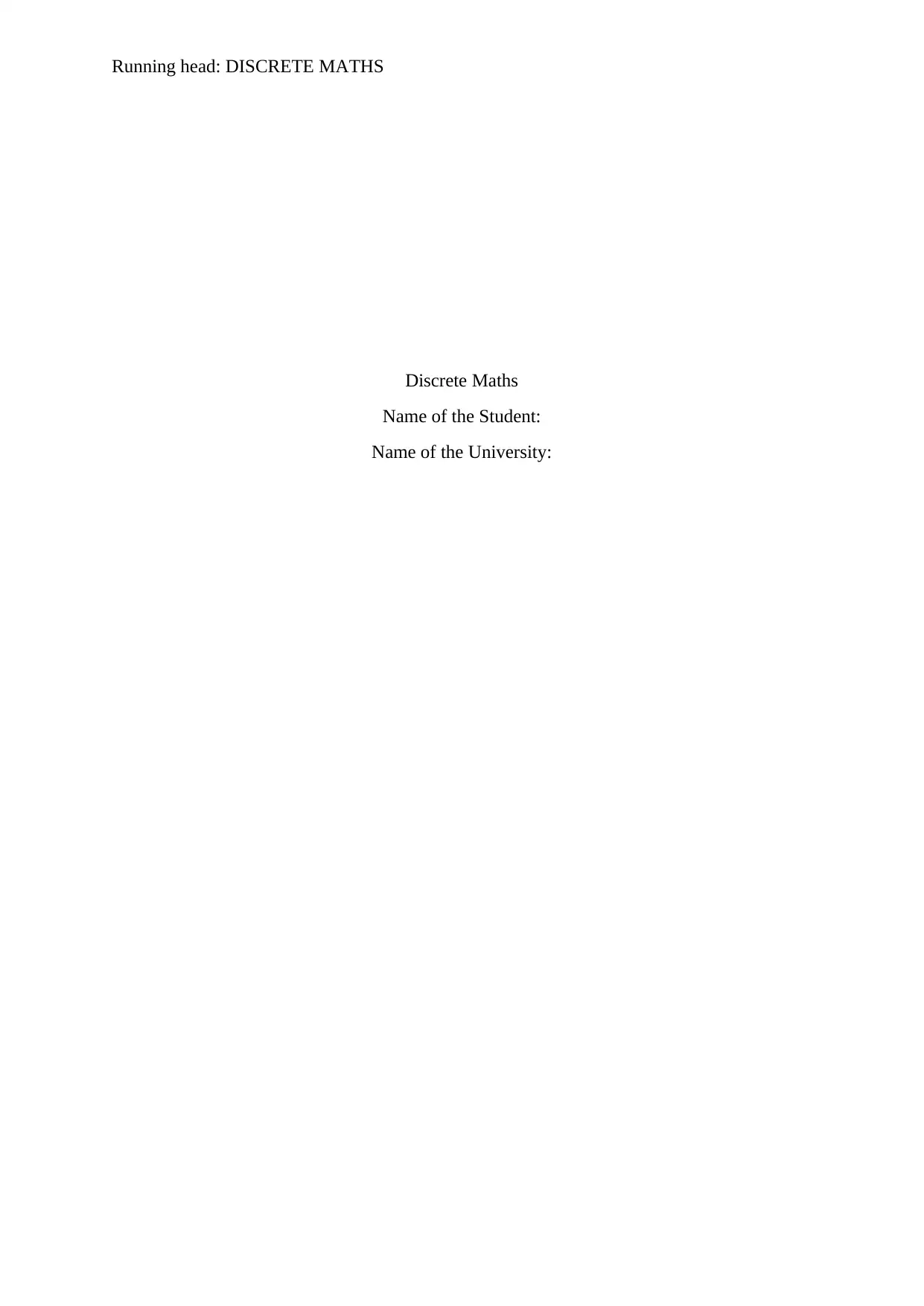
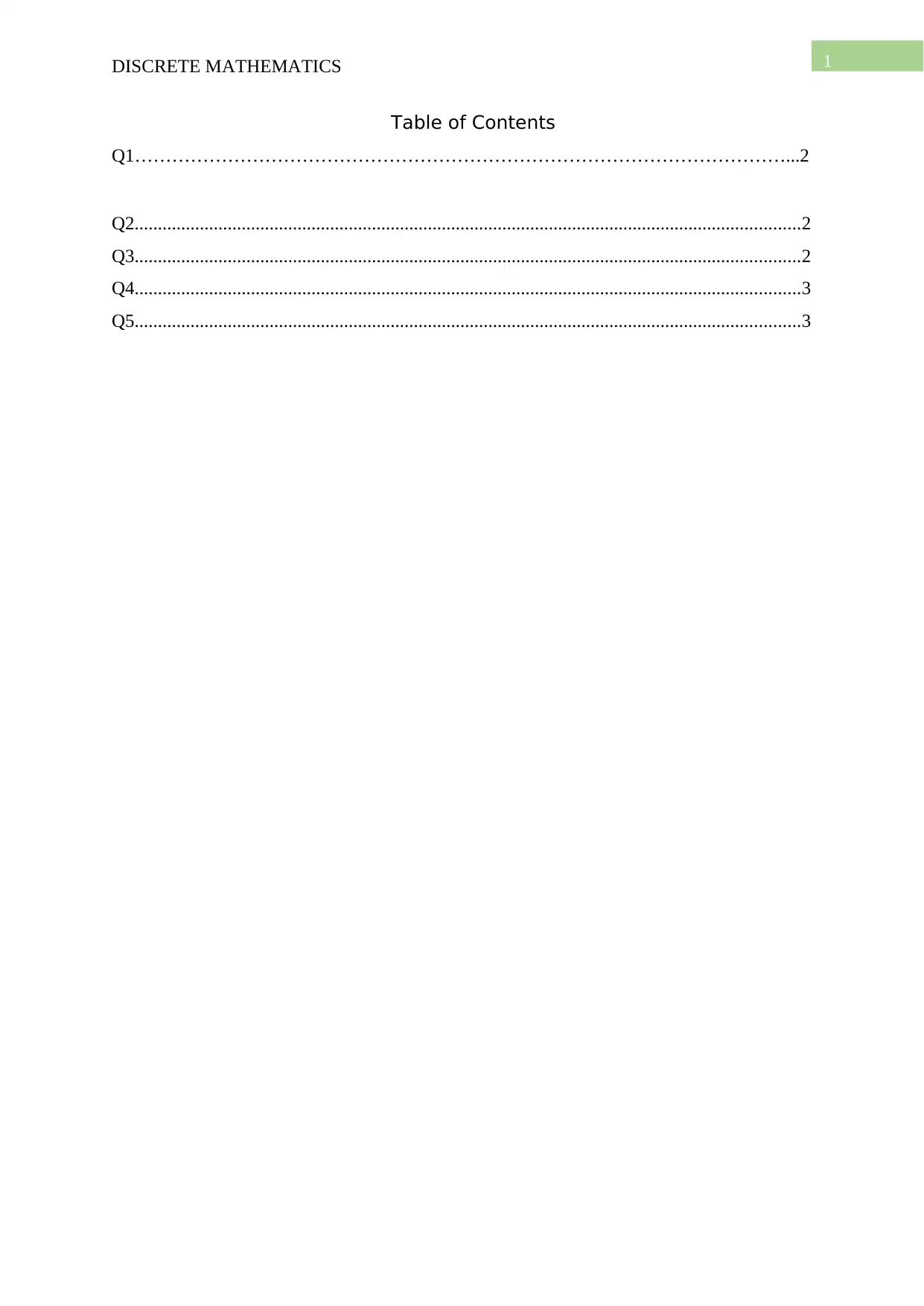
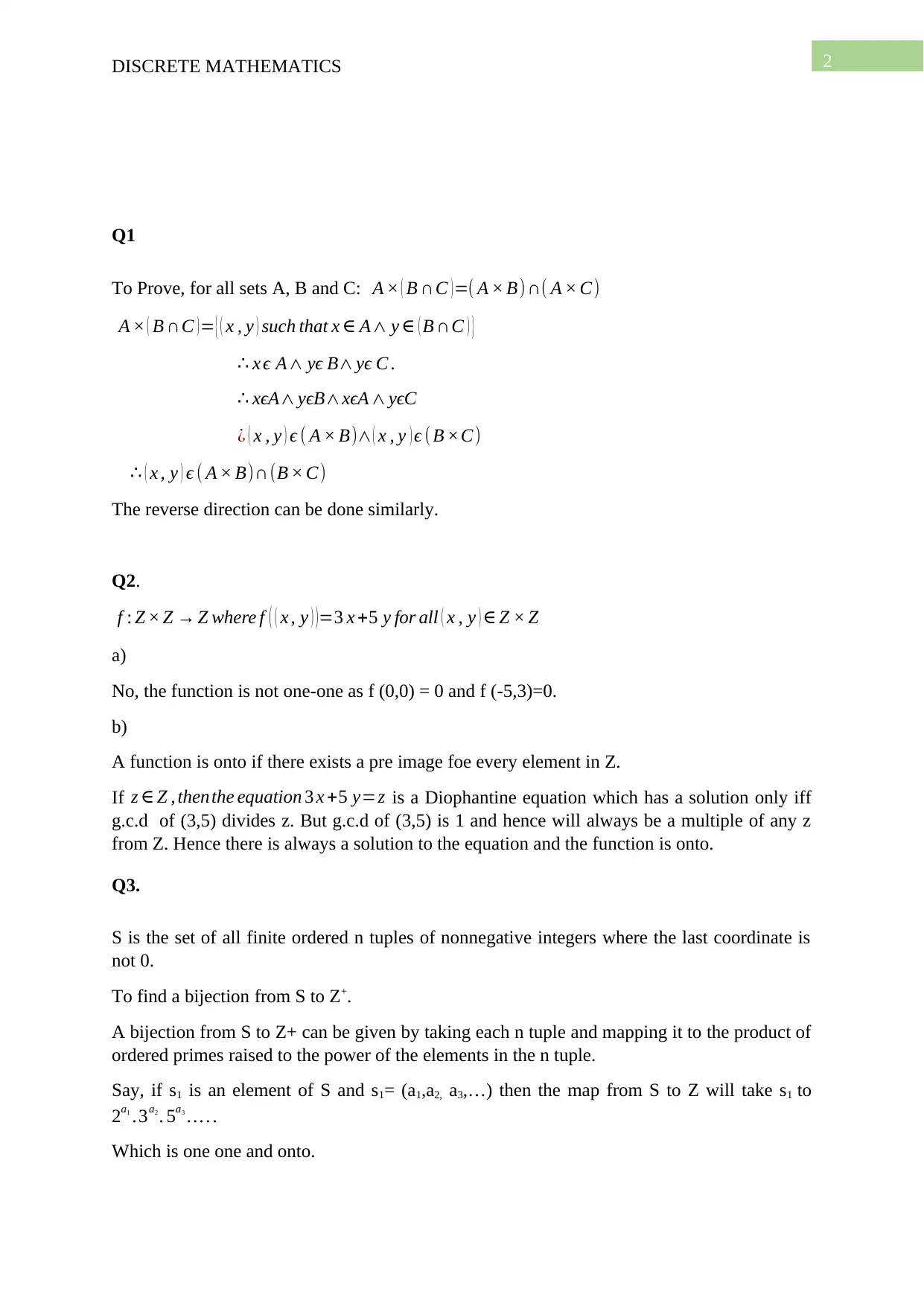

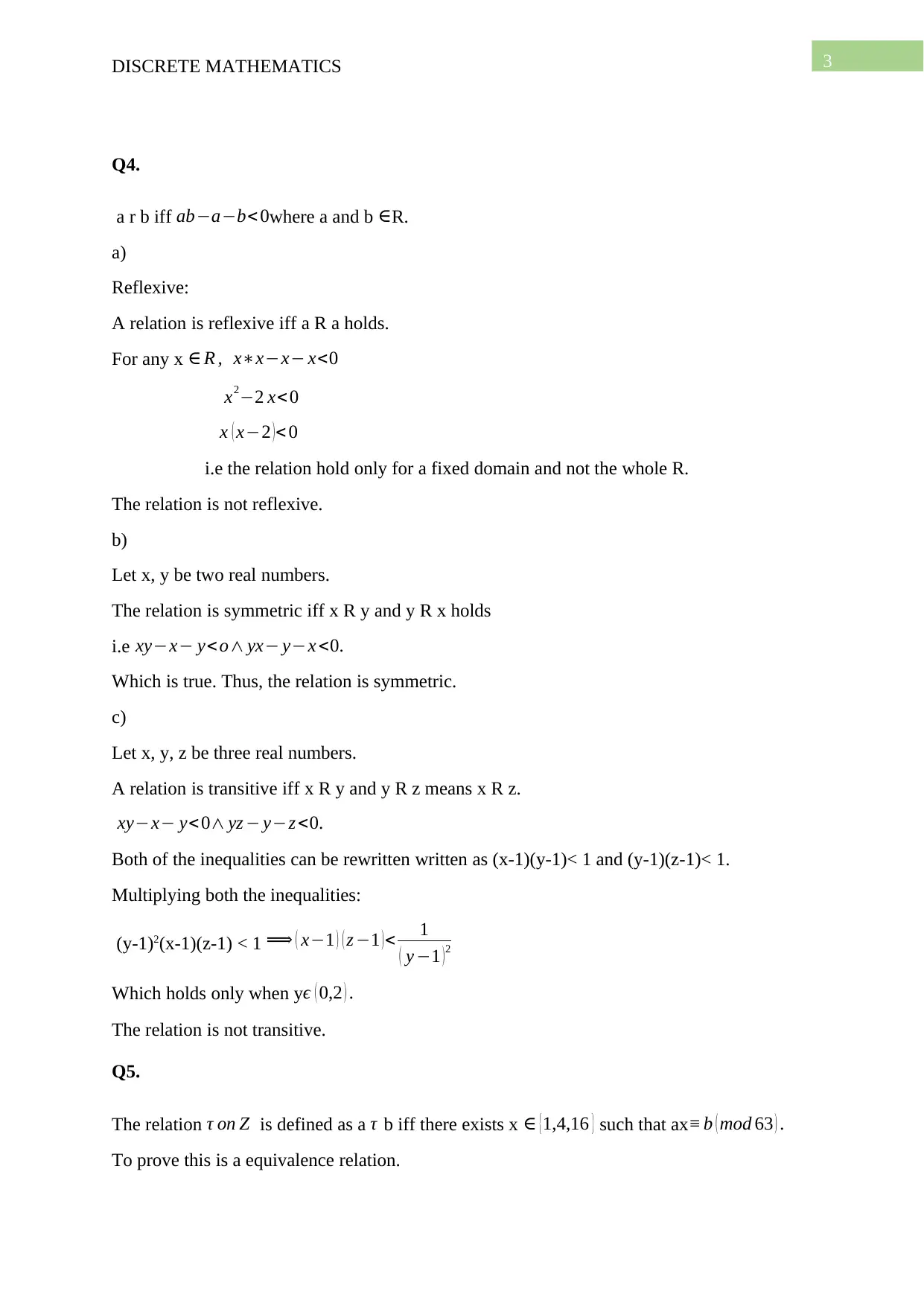
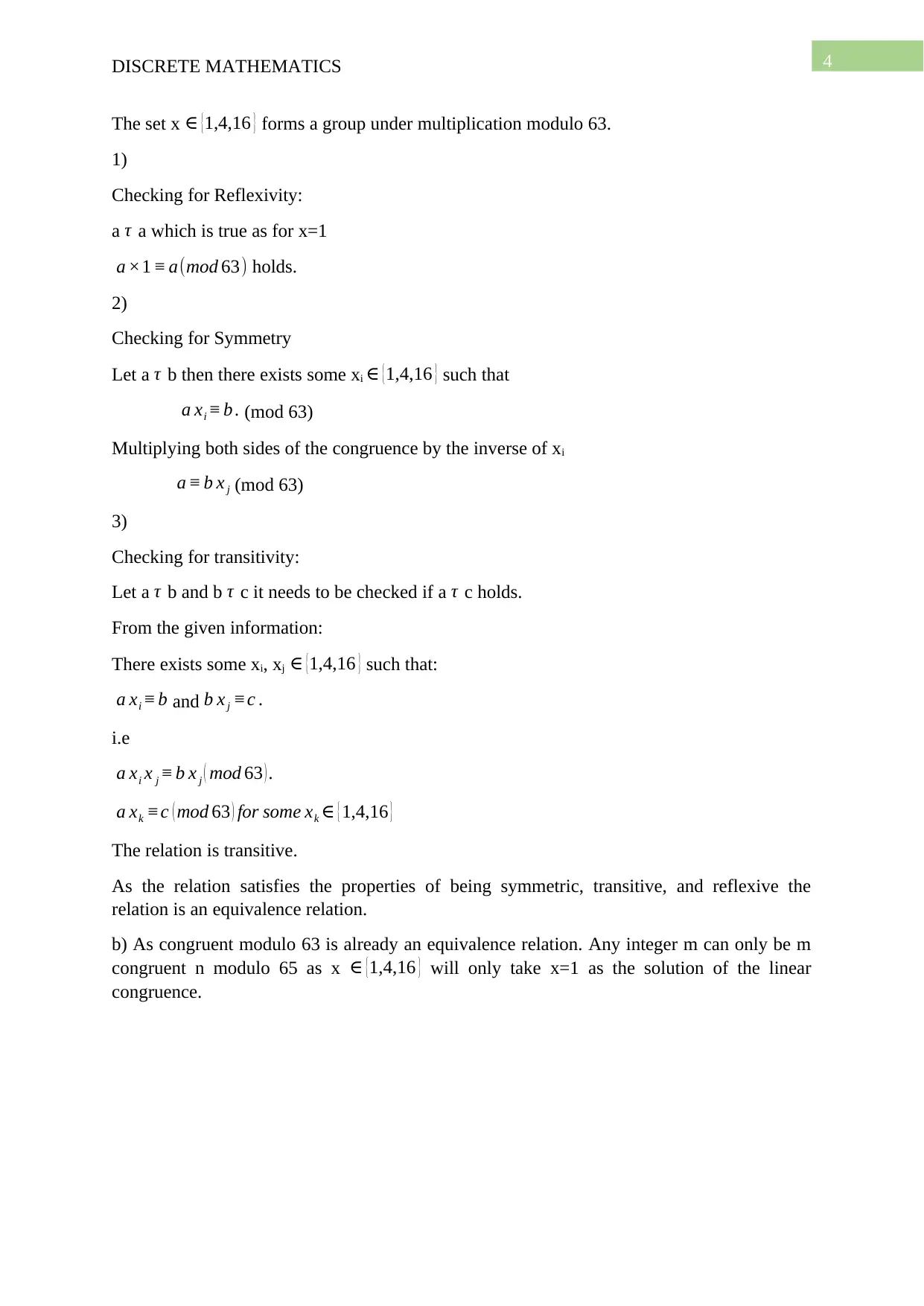
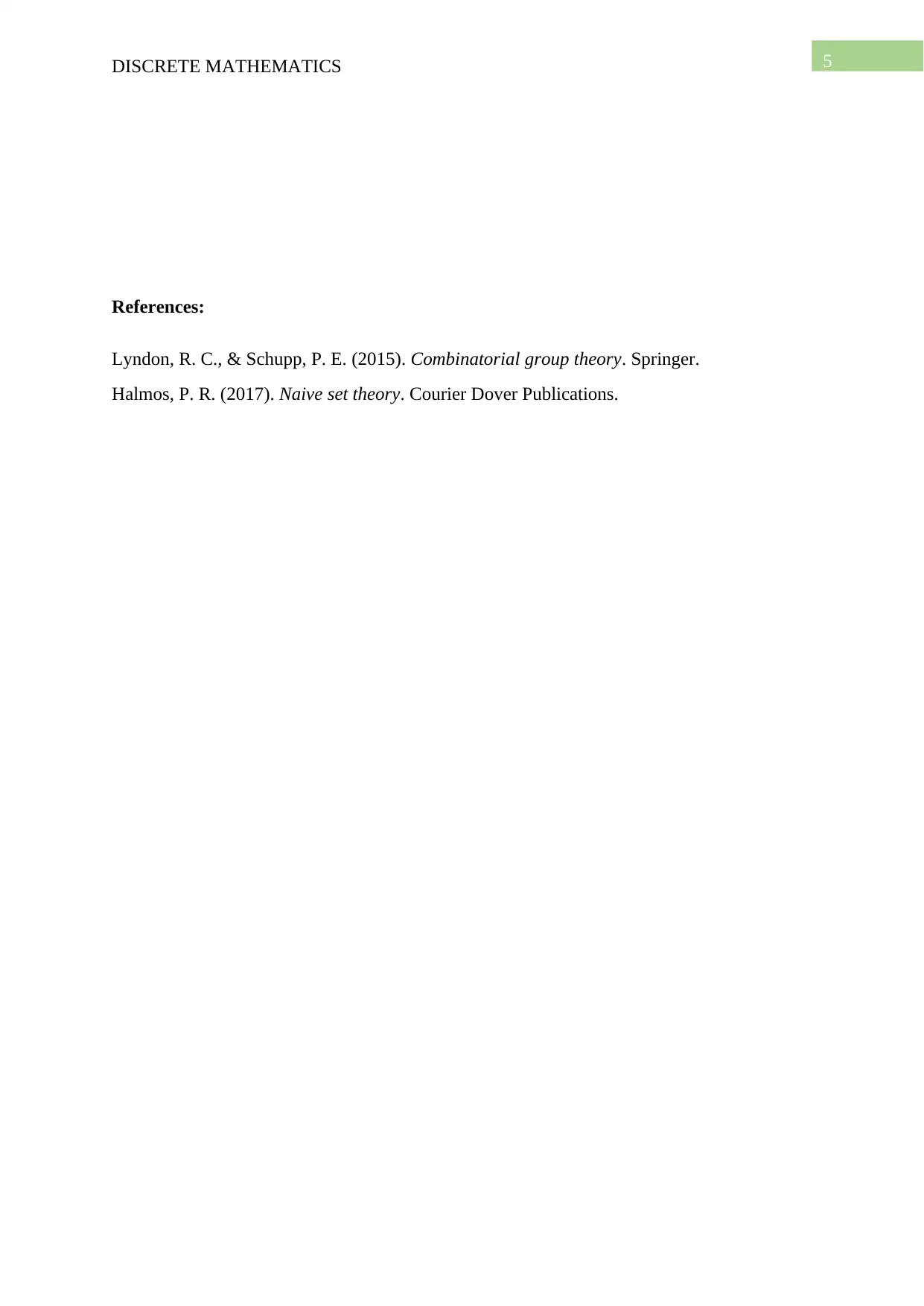

![[object Object]](/_next/static/media/star-bottom.7253800d.svg)